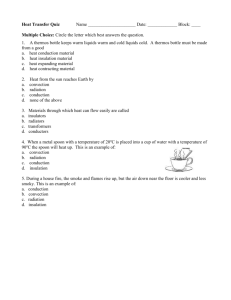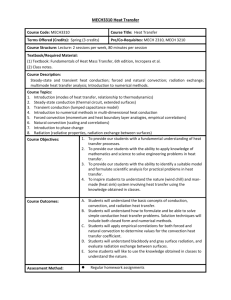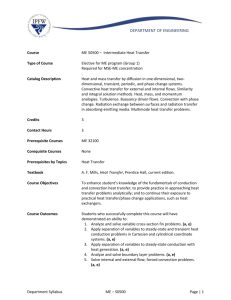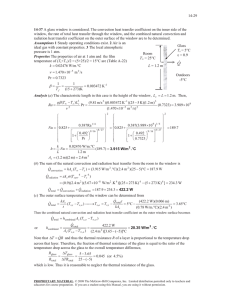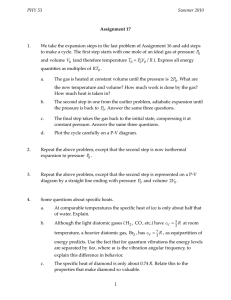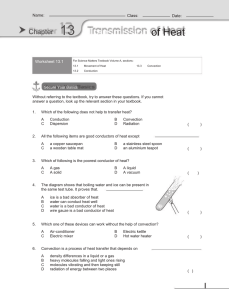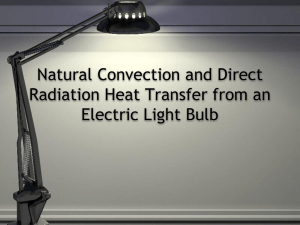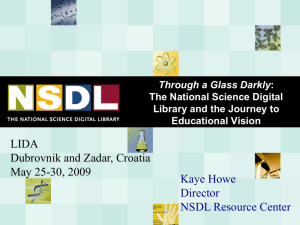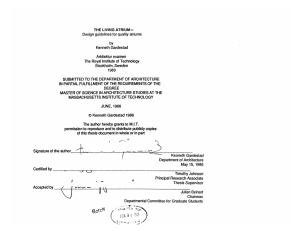5.2.6.C.3 6th grade Physical Science: Physical science principles
advertisement
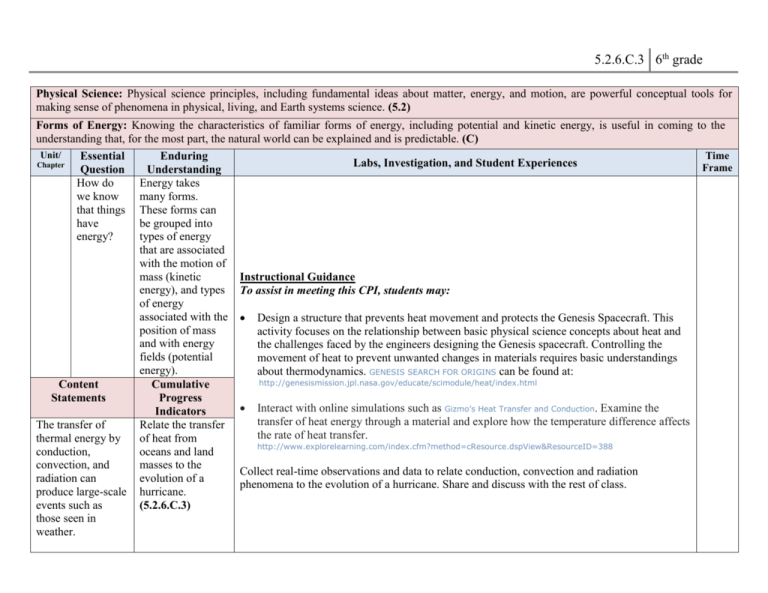
5.2.6.C.3 6th grade Physical Science: Physical science principles, including fundamental ideas about matter, energy, and motion, are powerful conceptual tools for making sense of phenomena in physical, living, and Earth systems science. (5.2) Forms of Energy: Knowing the characteristics of familiar forms of energy, including potential and kinetic energy, is useful in coming to the understanding that, for the most part, the natural world can be explained and is predictable. (C) Unit/ Time Essential Enduring Labs, Investigation, and Student Experiences Chapter Frame Question Understanding How do Energy takes we know many forms. that things These forms can have be grouped into energy? types of energy that are associated with the motion of mass (kinetic Instructional Guidance energy), and types To assist in meeting this CPI, students may: of energy associated with the Design a structure that prevents heat movement and protects the Genesis Spacecraft. This position of mass activity focuses on the relationship between basic physical science concepts about heat and and with energy the challenges faced by the engineers designing the Genesis spacecraft. Controlling the fields (potential movement of heat to prevent unwanted changes in materials requires basic understandings energy). about thermodynamics. GENESIS SEARCH FOR ORIGINS can be found at: http://genesismission.jpl.nasa.gov/educate/scimodule/heat/index.html Content Cumulative Statements Progress Interact with online simulations such as Gizmo’s Heat Transfer and Conduction. Examine the Indicators transfer of heat energy through a material and explore how the temperature difference affects The transfer of Relate the transfer the rate of heat transfer. thermal energy by of heat from http://www.explorelearning.com/index.cfm?method=cResource.dspView&ResourceID=388 conduction, oceans and land convection, and masses to the Collect real-time observations and data to relate conduction, convection and radiation radiation can evolution of a phenomena to the evolution of a hurricane. Share and discuss with the rest of class. produce large-scale hurricane. events such as (5.2.6.C.3) those seen in weather. 5.2.6.C.3 6th grade Desired Results/Assessments Sample Assessments To show evidence of meeting this CPI, students may complete the following performance assessments and answer the following questions: 1. Design and carry out unique realworld demonstrations that model and the principles of conduction, convection and radiation. Create a multimedia presentation, based on the demonstrations that can be shared virtually with other students. 2. Explain, through modeling, how the oceans play a major role in regulating the weather and climate of the planet in a short digital presentation. Access authentic data obtained through the use of sensitive instruments to get a better view of the functioning of the oceans and the atmosphere. 3. Jim put four thermometers into four glasses of water and left the glasses of water outside in different locations. After an hour, which glass of water will MOST LIKELY have the highest temperature? A. The glass in the highest location B. The glass in the wettest Resources National Science Digital Library, Science Digital Literacy Maps The Physical Setting: Energy Transformations http://strandmaps.nsdl.org/?id=SMS-MAP-2071 The Physical Setting: Weather and Climate http://strandmaps.nsdl.org/?id=SMS-MAP-1698 National Science Digital Library, Science Refreshers http://nsdl.org/refreshers/science/ Science Curriculum Topic Study: Energy Transformation p. 213 Weather and Climate p. 191 5.2.6.C.3 6th grade location C. The glass in the location with the most wind D. The glass in the location with the most sunlight 4. The source of energy for the Earth’s water cycle is the A. B. C. D. wind Sun’s radiation Earth’s radiation Sun’s gravity
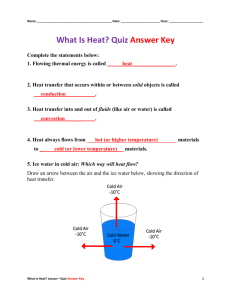
![Applied Heat Transfer [Opens in New Window]](http://s3.studylib.net/store/data/008526779_1-b12564ed87263f3384d65f395321d919-300x300.png)

